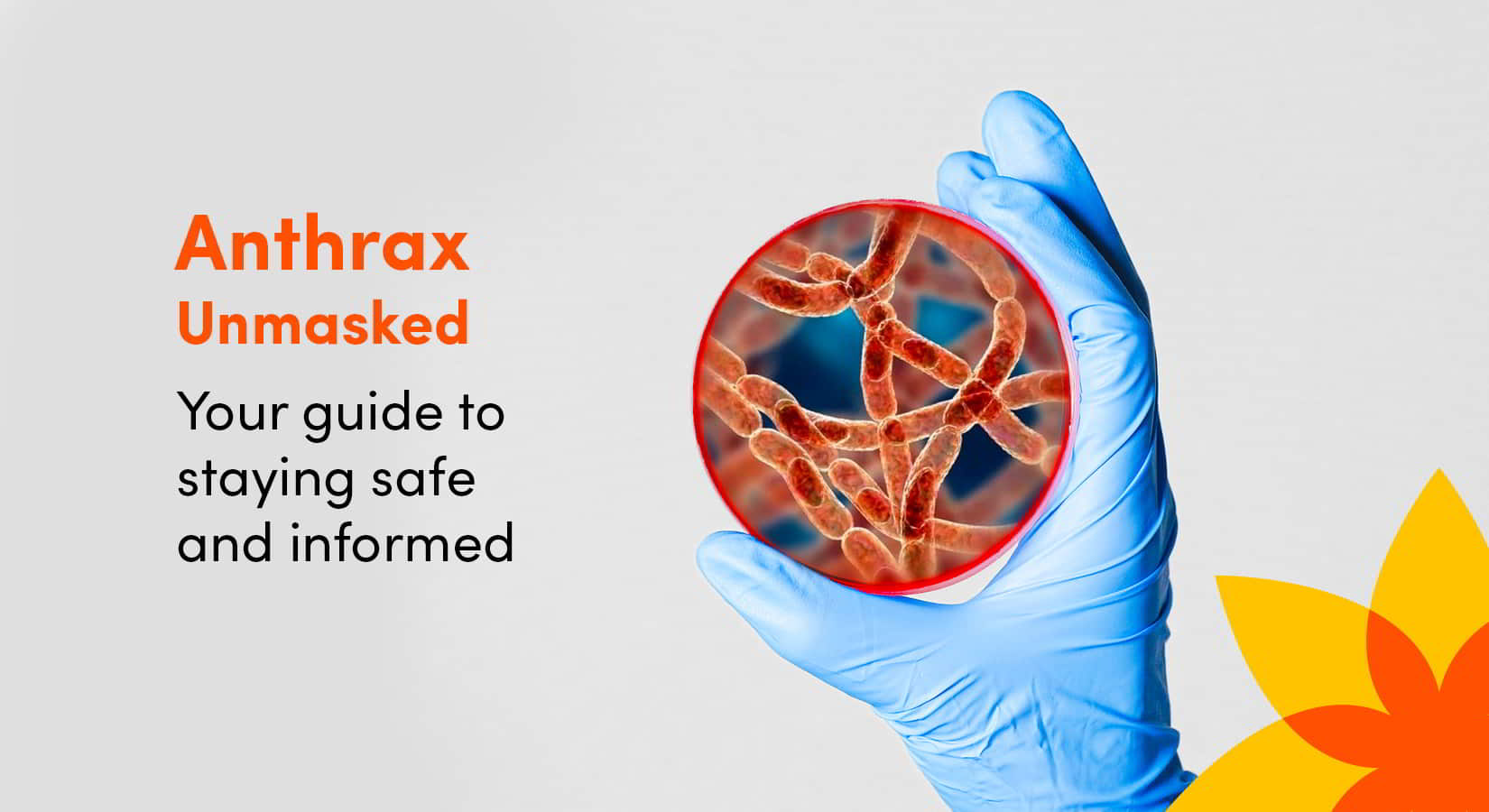Introduction:
Anthrax, a bacterial infection caused by Bacillus anthracis, has gained notoriety as a disease associated with natural outbreaks. Today we will learn about this disease, its forms, transmission, and how to stay safe. Staying informed is our best defense against this potentially deadly disease, so let's delve into the details together.
What is Anthrax?
Anthrax is a zoonotic disease that can spread from animals to humans. It primarily affects herbivorous animals like cattle, sheep, and goats. Bacillus anthracis forms spores that can survive in the environment for years, making anthrax a persistent threat. Although relatively rare in humans, it can be fatal when left untreated.
Forms of Anthrax:
There are three primary forms of anthrax that affect humans:
- Cutaneous Anthrax: Cutaneous anthrax is the most common form, accounting for approximately 95% of all anthrax cases. It occurs when the anthrax spores come into contact with broken skin, developing a painless, raised sore with a characteristic black center (eschar). The surrounding skin may become swollen and red, and nearby lymph nodes might also enlarge. With proper treatment, cutaneous anthrax is rarely fatal.
- Inhalation Anthrax: Inhalation anthrax is the most severe form and occurs when anthrax spores are inhaled into the respiratory system. Initial symptoms may mimic a common cold or flu, including fever, fatigue, a mild cough, and muscle aches. However, severe respiratory distress, shortness of breath, and chest pain may occur as the disease progresses. Inhalation anthrax is highly lethal, especially if not diagnosed and treated promptly.
- Gastrointestinal Anthrax: Gastrointestinal anthrax is contracted by consuming contaminated meat from infected animals. Symptoms may include nausea, vomiting, abdominal pain, fever, and severe diarrhea, which may contain blood. Although rare, gastrointestinal anthrax can be fatal if not treated quickly.
How Does Anthrax Spread?
Anthrax primarily spreads through contact with infected animals or their products. People working in close proximity to livestock, such as farmers, veterinarians, and abattoir workers, are at higher risk. Additionally, spores can be found in soil and animal hides, posing a risk to individuals handling animal products. In the case of inhalation anthrax, exposure to anthrax spores in the air, particularly in a bioterrorism scenario, can lead to infection.
Symptoms of Anthrax:
The symptoms of anthrax vary depending on the form of the disease. Cutaneous anthrax presents as a painless sore with a black center, while inhalation anthrax initially resembles flu-like symptoms but rapidly progresses to severe respiratory distress. Gastrointestinal anthrax is characterised by gastrointestinal symptoms like nausea, vomiting, and diarrhea. Regardless of the form, seeking immediate medical attention is crucial to ensuring prompt diagnosis and treatment.
Prevention and Seeking Medical Attention:
Preventing anthrax involves adopting certain precautions:
- Avoid contact with sick or dead animals.
- Practice good hygiene, especially after handling animal products.
- Consume only properly cooked meat from reliable sources.
If you suspect anthrax exposure or experience symptoms consistent with the disease, seek medical attention immediately. Early diagnosis and treatment significantly improve the chances of a positive outcome.
Conclusion:
Anthrax, though rare, remains a severe concern in natural outbreaks. Understanding the forms of anthrax, how it spreads, the visible symptoms, and who is at risk are crucial for protecting ourselves and our communities. By following preventive measures and seeking medical attention promptly, we can minimize the impact of anthrax and safeguard public health. Let's spread awareness about anthrax by sharing this vital information with our friends and family, empowering them to stay informed and safe. Together, we can combat this formidable threat and protect our future.

